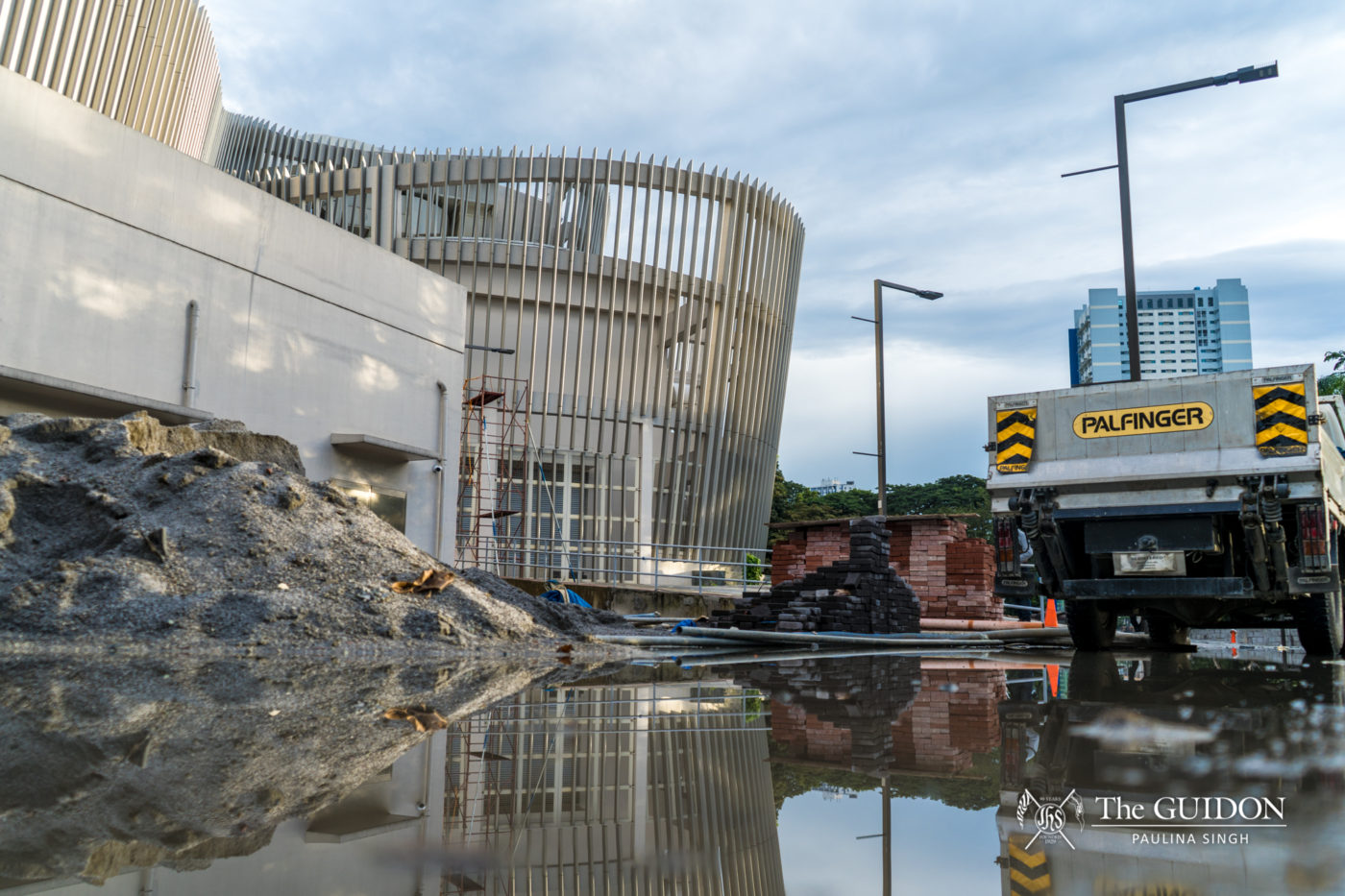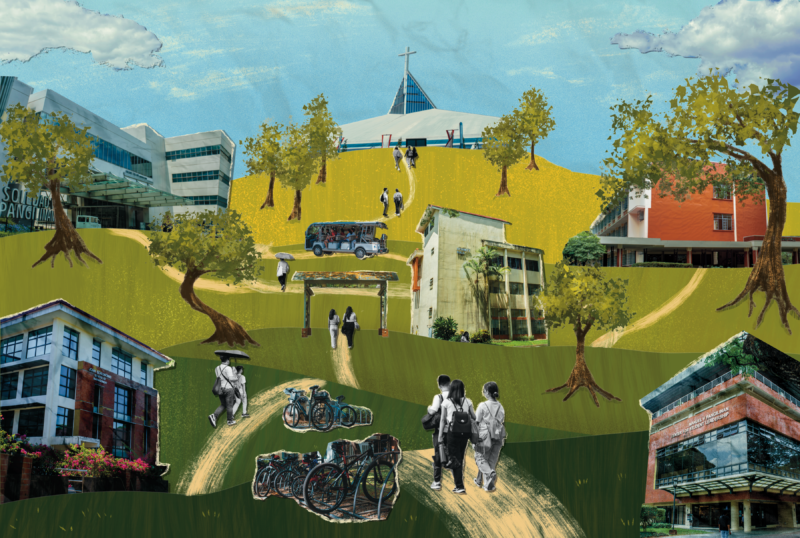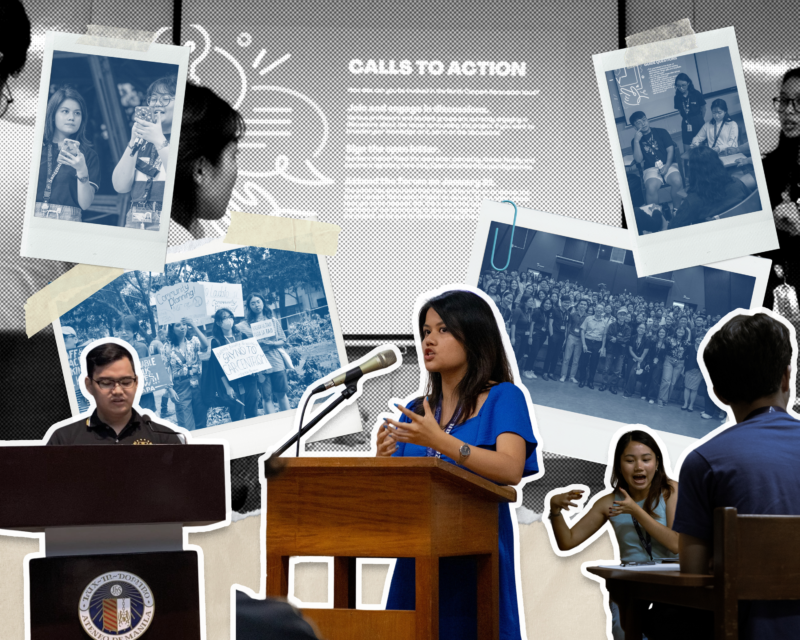PROJECTED DEVELOPMENTS for the Ateneo de Manila University have been set in place in the Ateneo de Manila University Development Goals 2030 (AMDG 2030), a detailed blueprint containing the strategic direction for the development of the Ateneo in the years to come.
Facilities and Management Office (FMO) Director Architect Michael Canlas said that AMDG 2030 is a large-scale guide that goes beyond changes to facilities and includes leadership, programs, and education.
To achieve this, AMDG 2030 aims to achieve five goals: To strengthen the strategic markets of Jesuit education; broaden our influence in building the nation and the Asia Pacific region; increase access to Ateneo education; strengthen University leadership; and sharpen the distinct character of Ateneo’s educational mission,
Furthermore, the blueprint is said to serve as a framework to guide future projects for better urban-planning by taking into consideration where road networks are connected, where buildable areas are, and which buildings can be expanded vertically.
Canlas also said that while the Office of the President and the Office of the Vice President will be in charge of administration and planning, FMO will implement the physical changes with consultations from PGAA Creative Design, a firm that specializes in environmental and urban design planning.
More than buildings
Vilches said that while the official reasons behind all the AMDG 2030 changes are still under discussion by the administration, she believes that these modifications will improve the “processes and achievements” of the University.
She explained that the masterplan achieves this by strengthening Ateneo’s distinctive Jesuit education, which sets the University apart from other institutions that have also been planning for 2030.
In line with this, Associate Dean for Core Curriculum Benjamin Tolosa, Jr., PhD gave an overview of the revised core curriculum during the previous Loyola Schools Faculty Day on January 18. He explained that the new curriculum will include the new General Education requirements of the Commission on Higher Education (CHED).
He said that even with the revisions, the curriculum will still be “true to our Ateneo identity as a Filipino, Catholic and Jesuit university.”
The curriculum is organized under four stages: Foundation, Rootedness, Deepening, and Leadership—all of which aims for the students to understand the world and the self for better future engagement with society.
However, for University Dorm Director Rene San Andres, the success of AMDG 2030 is reliant on the students as well. He explains that a school’s “relevance” will have to depend on what becomes of its students in the future.
“You get caught [on] the technical stuff, you lose sight of the greater purpose. So AMDG 2030 incorporates that greater purpose,” he said. “[It] is the endpoint, the teleological picture, the vision, the picture, the articulation of our desired future. The desired future is actually carried by you.”
A “need-based” guide
With news of the masterplan circulating, Canlas clarified that the blueprint does not specify what specific structures will be set in place. Instead, AMDG 2030 is meant to serve as a guide that various offices like the FMO can use in terms of developing areas of the campus.
“[AMDG 2030] is not that firm [because] it’s a case-to-case basis in terms of need,” he said.
Canlas explained that the plan works on a “need-based to support-based” direction. For instance, all developments that have already been implemented were created based on long-term development projection and were likewise supported by infrastructures guided by the masterplan.
Among the developments that followed this format is the road construction behind the Areté. Canlas said that this new exit road was built because of the current traffic situation on campus. He said that the project’s long-term effects will aid in easing the flow of traffic and providing other exits for vehicles.
Another existing development within the University is Greenpark, an area built for studying and eating behind the Science Education Complex building A. According to Canlas, this initiative was both practical and sustainable because the wooden tables were from remnants of campus trees during typhoons.
He also mentioned the reinforcement of Ateneo Grade School buildings to address the safety concern of the West Valley Fault. Ateneo High School also had some road developments like added walkways and expanded lanes to lessen traffic congestion and encourage walking.
Not a linear process
As far as feasibility for future structural projects is concerned, Canlas said that there will be multiple aspects that have to be taken into account, such as funding, compliance, proper planning, space, and sustainability.
He added that the University tries to find a balance between development and funding provisions as most projects are either funded by the University or are aided by benefactors.
“We have a lot of aspects [to consider in] putting these things into reality. Sometimes it might not even [push through] depending on the situation,” he said.
Despite the accomplished initiatives, Canlas said that there were some projects that had to be scrapped. One example he gave was the road extension that would have linked New Rizal Library to the Moro Football Field in 2018, which was canceled due to its negative effects on the sustainability and the preservation efforts for the School of Management Forest.
In addition to this, Canlas also said that spatial expansions that would be needed for any future infrastructures would not be possible for now due to the lack of vacant properties near the University.
As such, he explained that the provisions will have to depend on the vertical reconfigurations of current buildings. The PLDT-Convergent Technologies Center and John Gokongwei School of Management buildings, for example, were once three-story buildings that turned five-stories high.
Despite existing limitations, the masterplan is practical enough to take such factors into consideration: “The masterplan is somewhat a blueprint of our entire campus, which states the size, the number of area in terms of greenery, buildable space and forest reserve.”
ERRATUM: An earlier version of the article stated that Rene San Andres was the former Associate Dean for Student Affairs (ADSA). However, ADSA has been dissolved four years ago. The article has been edited to reflect San Andres’ current position as the Director of the University Dorm.







